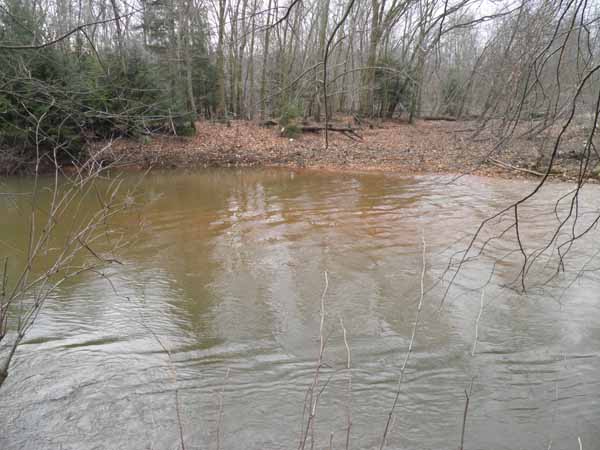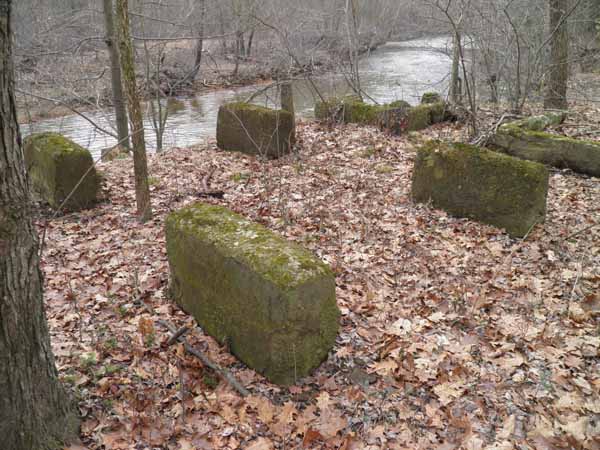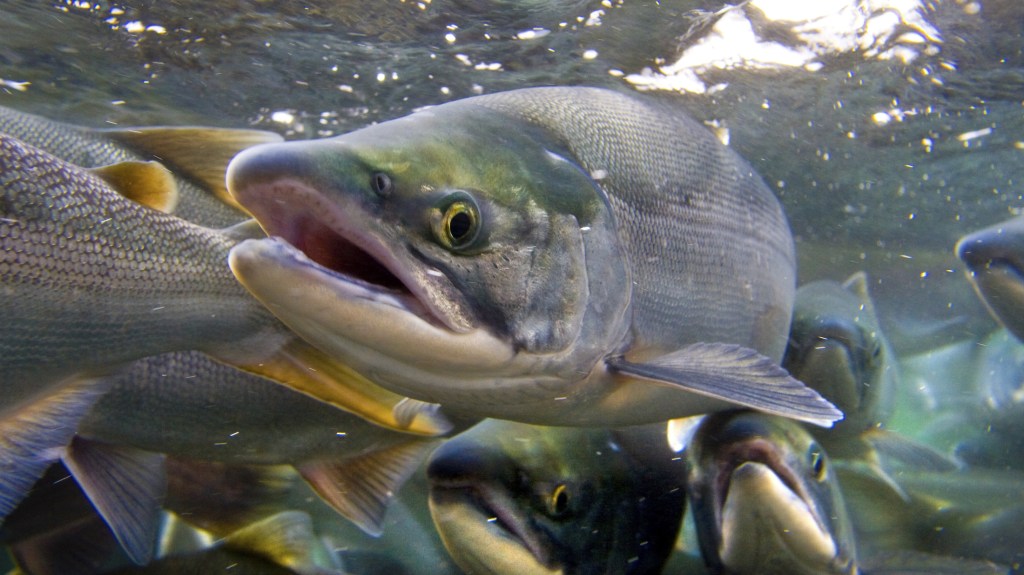Learning a river is a lifetime task, as anyone who has ever held a fly rod understands all too well.
But that’s nothing compared to discerning a river’s history. So often, we think of rivers as timeless. What we see now is what has always been.
Ecological history, an increasingly sophisticated field, presents a much more complex reality. Using a combination of paleontology, archaeology and historical record, scientists can draw a picture of rivers past.
It’s not a happy narrative: in North America the ecological history of rivers is an epic of abundance turned to scarcity, of treating natural wonders like garbage dumps, of dams and pollution and mines and invasive species and mismanagement. Of millions of migratory fish disappearing. It’s a story of almost-incomprehensible loss.
But why dwell on the past?
It’s human nature to assume that the way things are today are “normal.” Scientists have a term for this: shifting baseline syndrome. The dozens of salmon in a river become the baseline, the new normal — even though fifty years ago, there were tens of thousands, and before that, millions.
And when the fish disappear, it’s as if they were never there.
My former colleague and salmon conservationist Mark Davidson (now with Trout Unlimited) so often said: “You lose the memory, you lose the fish.”
Mark spent countless hours planning and implementing salmon restoration projects. And those fish can be restored, even to streams where they’ve been absent for decades. But Mark found that when his grandfather’s generation had no recollection of salmon in a particular river, it was likely too late.
The Boise River that flows near my home once had so many salmon their splashing kept people awake at night. That’s part of the historical record, but the memory is long, long gone. The salmon are not coming back.
Lose the memory, lose the fish. For so many rivers, we’ve lost the memory. Can ecological history help get it – and the fish – back?

A Dead River Runs Through It
One of the angling community’s most cherished quotes is the last line of Norman MacLean’s A River Runs Through It: “I am haunted by waters.” That little line harkens deeply beautiful Montana rivers, pocket water and boulders, granite peaks framing it all.
I’d like to tell you about the river that haunts me. This one has nothing to do with postcard-pretty scenes.
It’s my home water, quite literally – my family still owns land in central Pennsylvania bordering it. The official name, the one on maps, is Shamokin Creek. I never called it that, nor did anyone I know.
To us, it was Coal Creek, and for good reason. It ran orange with the acid from mine drainage. It smelled of sulfur and a faint whiff of sewage. Coal dust and the remnants of mining lined the banks.
Nothing lived in it—no fish, no crawdads, no insects. It’s been that way for generations; it’s what my parents knew and my grandparents and my great-grandparents. A dead river. It remains so to this day.
As odd as it seems now, as a kid it was perfectly normal, the only Coal Creek I knew. I’d walk along and shoot my .22 rifle at the cans and bottles lining the banks, the rat-tat-tat of the shots echoing off coal heaps.
A flowing, beautiful river? Please. More like a wasteland, a watery dump. Hell, parts of the movie of Cormac McCarthy’s bleak, post-apocalyptic novel The Road were filmed nearby.
Recently I read John Waldman’s new book, Running Silver: Restoring Atlantic Rivers and Their Great Fish Migrations, a brilliant and heartbreaking work of ecological history on the East Coast’s rivers and their fish. It’s the kind of book, the kind of story, we need to hear and tell more, unpleasant thought it may be.
Waldman draws on extensive research to tell of migratory fish turning rivers silver, of millions of shad and eels and sturgeon and more, of sheer abundance. His book is one of losing the memory of rivers and fish and what happens when we do.
And what happens is this: Coal Creek, and thousands of rivers, creeks and streams like it. There are many different causes, but the end result for so many rivers is the same: the migratory fish exist as a mere shadow of their former great runs, if they exist at all.
Once, Coal Creek coursed with life. Come spring it would have been packed with migrating shad, enough to support commercial fisheries. I could have walked down to that stream and caught a fish on every cast. I may have thought I could walk across the water on fish backs, as people in earlier times were fond of saying.
It is no exaggeration to suggest it would have equaled those famous Alaskan rivers I consider so exceptional now. Waters that feed people and draw visitors from around the world to experience their natural riches. Think about this: there were once rivers like this across the continent.
In my backyard. In your backyard.
Alabama shad once ran by the millions from the Gulf all the way into Iowa. Pacific salmon fed people and bears and trees across the Northwest. Giant sturgeon dominated the river depths for millions of years. And on and on.
Still, is ecological history an interesting field with no relevance for the future? Is it studying dinosaurs?
No. It’s not just important, it’s vital to the whole conservation enterprise. The history demonstrates clearly that we have to hold on to what we have left – the places like Bristol Bay, where millions of salmon still run. Just as we assume a trashed river has always been trashed, we often err in thinking a river that is abundant will stay that way forever—a grave error.
And history can provide conservationists with a map for restoration. There will be questions, of course: What are we trying to restore exactly? Conditions in 1950 or 1800 or 1492 or 10,000 BC?
But does that matter? Today’s Coal Creek is not the “normal” we should accept. There are other alternatives for fish and for people. It will take time and hard work and money and public will, but we can do better for our waters. For us.

Remembering
In a few weeks, I’ll return to the banks of Coal Creek to hunt deer with my father. Walking around the woods, it’s apparent a lot has changed, and for the better. The white-tailed deer, once eliminated from these parts, browse everywhere. Once-cleared fields now stand as extensive hardwood forest.
I’ve seen the wild turkeys and black bears—as a small child, no more real here than shad in Coal Creek—reclaim their former haunts in my lifetime. Large coyotes, carrying wolf blood, moved in from the north and assumed the role of top predators. Fishers—those large and wide-roaming giant weasels once believed to need true wilderness—are starting to show up.
There is hope.
This trip, I’ll stand along Coal Creek – no, Shamokin Creek – but it won’t be the water of my youth.
I’ll instead see shad clogging the stream, their schools so dense you could cross the river on their backs. I’ll cast a line, wondering what giant fish I’ll hook. I’ll stand there and see the exuberance of a living, wild river.
Only in my imagination, of course. The water before me will still run orange and foul.
But that imagining is the first step in setting things right again. We need to know the ecological history of the places around us. We need to remember the fish, for their sakes and ours.




Lest we forget, the memories of our youth must be retained. Your essay strikes a somber note for those of us who do remember, and I want to believe that our society does care. Having been raised in west central Indiana, the local streams of major importance were Sugar Creek and Big Walnut. Sugar Creek has a reputation for bass fishing. and it has served as a scenic mecca for those who canoe, hike, and camp in this area. Big Walnut survived a proposal for a lake site that would have destroyed a beautiful forested topography that offered growth that was rare in Indiana, and the value of this rugged waterway remains as a tribute to the Indiana conservation movement. As I near 80 years of age, I am pleased to believe that these waterways will remain in place and under continued wise conservation for future generations to come. Sincere appreciation for sharing your thoughts.
Eloquent and inspirational! Thanks, Matt!